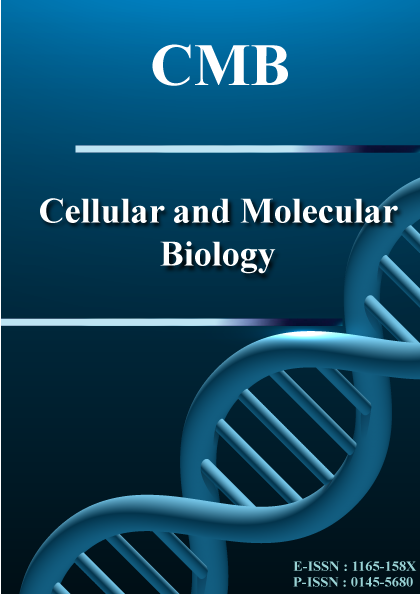Issue
Copyright (c) 2025 Azad A. Haleem

This work is licensed under a Creative Commons Attribution-NonCommercial-NoDerivatives 4.0 International License.
The undersigned hereby assign all rights, included but not limited to copyright, for this manuscript to CMB Association upon its submission for consideration to publication on Cellular and Molecular Biology. The rights assigned include, but are not limited to, the sole and exclusive rights to license, sell, subsequently assign, derive, distribute, display and reproduce this manuscript, in whole or in part, in any format, electronic or otherwise, including those in existence at the time this agreement was signed. The authors hereby warrant that they have not granted or assigned, and shall not grant or assign, the aforementioned rights to any other person, firm, organization, or other entity. All rights are automatically restored to authors if this manuscript is not accepted for publication.Clinical and genetic spectrums of Mucopolysaccharidosis type IV in Duhok city, Kurdistan region, Iraq
Corresponding Author(s) : Azad A. Haleem
Cellular and Molecular Biology,
Vol. 71 No. 3: Issue 3
Abstract
Mucopolysaccharidosis type IV also known as Morquio syndrome is a rare autosomal recessive lysosomal storage disorder due to deficiency of either N-acetyl-galactosamine-6-sulfatase (type A) or deficiency of beta-galactosidase (type B) which results in damages of bones, cartilages, eye corneas, skin and connective tissue. The objective of this study was to explore the relationship between specific gene mutations (c.860C>T, c.421T>A, c.1196delA) and clinical manifestations in patients with mucopolysaccharidosis type IV (MPS IV. The study was conducted at Heevi Tertiary Hospital in Duhok, Iraqi Kurdistan, till the period of September 2024, it involved 10 patients with confirmed MPS IV. Data on demographics, family history, consanguinity, skeletal, intelligence, and genetic mutations were collected. Results showed that mean age at diagnosis of 7.94 years, with females predominating. Consanguinity and family history were common. Short stature, macrocephaly, fatigue, generalized pain, and various skeletal abnormalities such as dysostosis multiplex and others. Hip dysplasia was present in 50% of patients, while intelligence was normal in most. The most frequent genetic mutation was c.860C>T, followed by c.421T>A and c.1196delA. Biochemical and hematological parameters were within normal ranges, but growth retardation was evident. Geographic clustering of mutations was noted, with c.860C>T prevalent in Zakho and c.1196delA exclusive to Akre. In conclusion, the study highlights the severe phenotypic expression associated with these mutations and underscores the influence of consanguinity and regional genetic predispositions. These findings emphasize the need for targeted genetic counseling and population screening programs in high-risk areas.
Keywords
Download Citation
Endnote/Zotero/Mendeley (RIS)BibTeX




